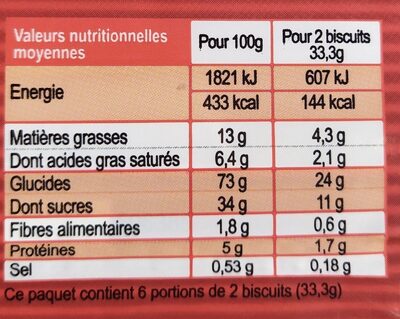Tartelettes a la fraise - Maison Delsin - 200 g
This product page is not complete. You can help to complete it by editing it and adding more data from the photos we have, or by taking more photos using the app for Android or iPhone/iPad. Thank you!
×
Barcode: 3045470116117 (EAN / EAN-13)
Quantity: 200 g
Brands: Maison Delsin
Categories: Snacks, Sweet snacks, Biscuits and cakes, Biscuits, Tartlet biscuits with fruit preparation
Stores: Magasins U
Countries where sold: France
Matching with your preferences
Environment
Carbon footprint
Packaging
Transportation
Threatened species
Report a problem
Data sources
Product added on by kiliweb
Last edit of product page on by moon-rabbit.
Product page also edited by alex38dc, karbon, liiisbeeeth08, magasins-u, openfoodfacts-contributors, quechoisir, yuka.CohEAd2OL849McvP45xr4T6yJrfDBOV2GVA8og, yuka.FJBGDoS3Q9A9GPHJjJgk7CbjC7jnXe1DFH4how, yuka.KbFlbeC7Q_clAsHs6oI05jm1Bta9E_ZjG2cXoQ, yuka.WFlZZERiMFlxS01Qb2NNbHJ5L3A1dUpudzRPTUFIaXpOdEloSVE9PQ, yuka.sY2b0xO6T85zoF3NwEKvln0ZV4LysBLCMgXgtGOAzPCxNpznXeFXu4_KKag.










